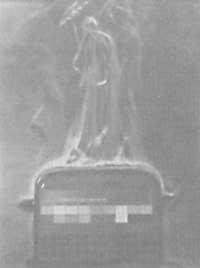Experiences with different effects of heat
Heat and temperature of the bodies
If we touch a piece of ice, we will notice cold. On the contrary, if we touch the heating we will notice heat. We can repeat this experience with many things and the heat levels that usually feel are different. The temperature indicates the heat levels of the bodies. As is known, the heat levels remain constant throughout time, that is, the bodies are heated or cooled.

But be careful! Our senses are not at all reliable when measuring heat levels. Let's make a simple experience:
Prepare three containers
- one with cold water and another with warm water
- last with hot water
Put the right hand in cold water and the left hand in hot water. After a season, remove the two hands from the containers and put in a container with warm water. What is perceived? What conclusions would you draw?
Diffusion of heat
Solids Solids Solid
Take a long chotx, an iron wedge, a copper knife, a steel wedge, an aluminum wedge and a glass knife and one of the ends of all of them were put in a cup with boiling water. If after the season we play the free ends:
Are they hot?
Have they all heated the same?
Some were metals and others were not. After the experience can you say that some and others conduct heat the same way?
In liquids
In a container with water are thrown some thin pieces of sawdust. Then the fire will be revived and it will begin to boil, observing the movement of the sawdust. The water drops located next to the sawdust will have the same movement. What conclusions would you draw from this experience?
In gases and especially in air

Live a cigar next to a one-bedroom stove and place the cigarette above the heating. Observe the movement of cigarette smoke. After seeing this you would draw with a few arrows the movement of the air of the room?
This type of heat transmission is called convective transmission.
Has anything to do with the experience seen in the previous section?
Radiation Radiation Radiation
In the heat extensions we have seen so far, intermediate material (air, liquid, etc.) was needed. If this medium is missing, that is, if it has become empty, for example, is it possible to expand heat?
Of course, yes. If not, how will the heat of the sun come?
In addition, radiation can accumulate on a small surface by means of a magnifying glass.
The experience we offer here is that, through a magnifying glass, the rays of the sun accumulate in bodies of different color, that is, white, yellow, green, red and black. What happens? What is the one that warms the most? And what is less heated?





